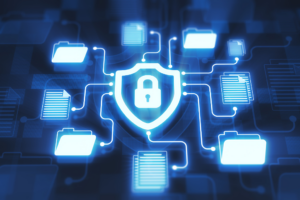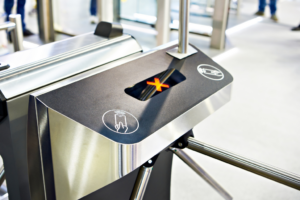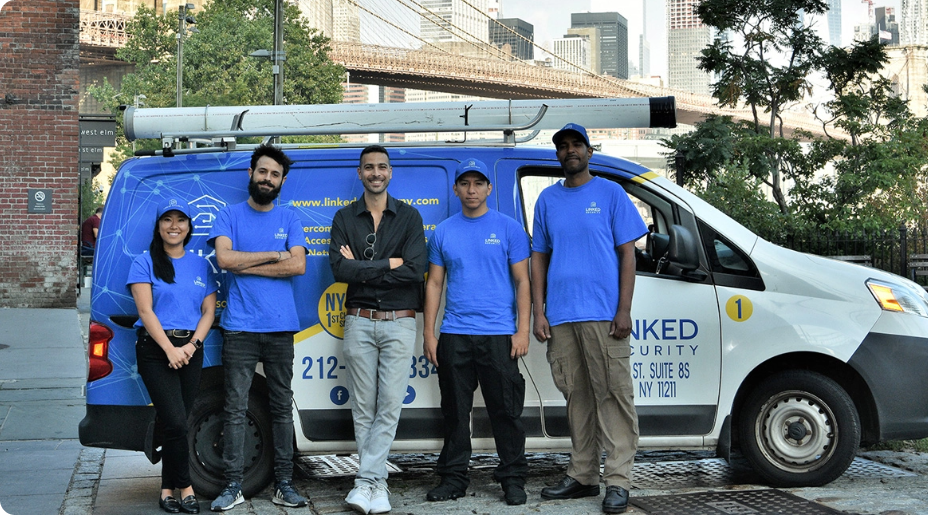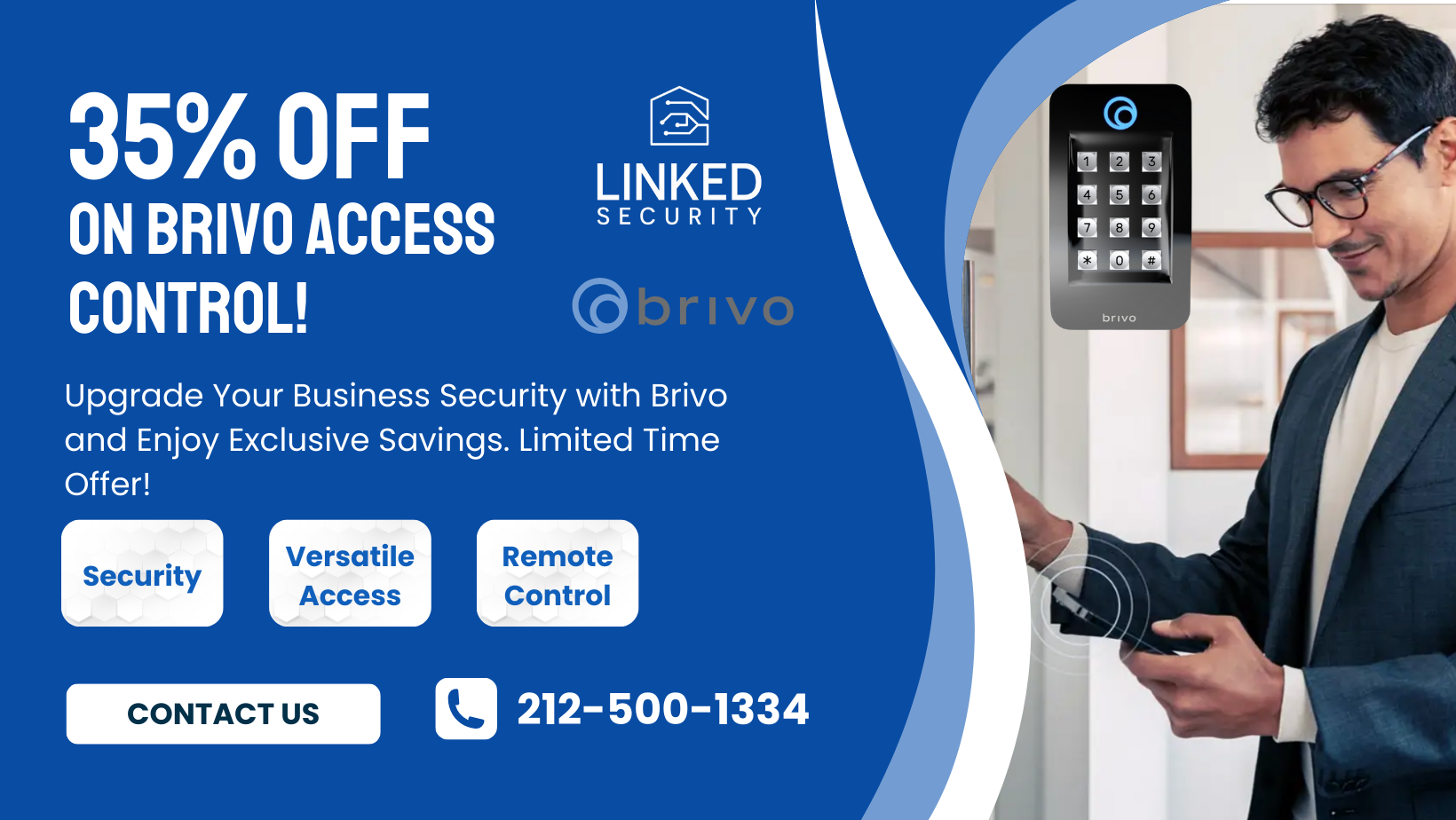Integrating Access Control with an Intercom System: Residential Building Benefits
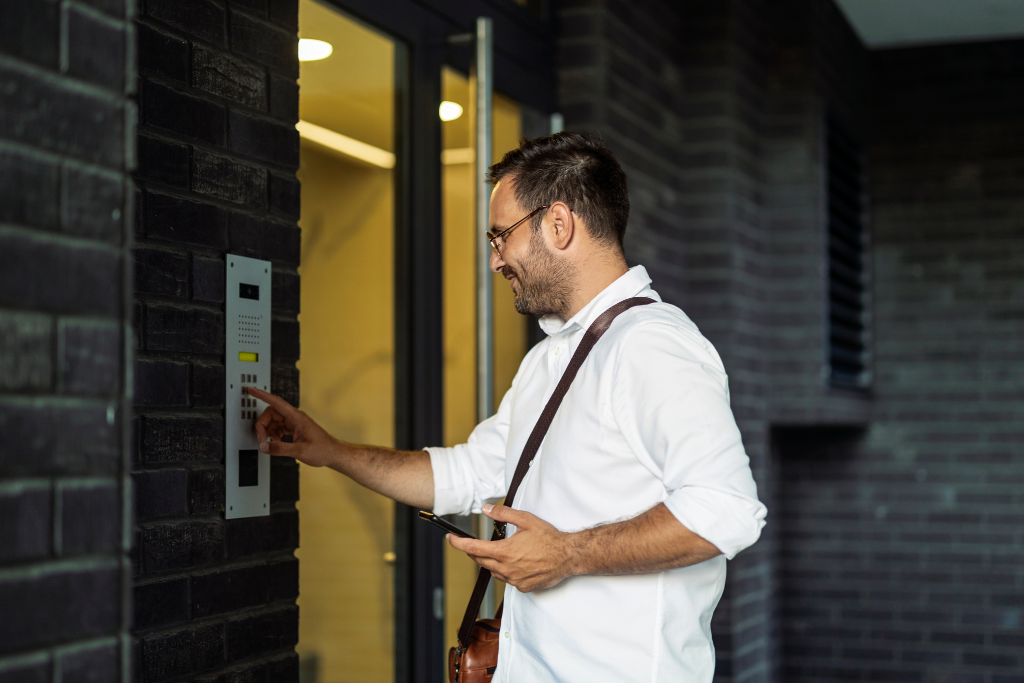
Integrating access control with an intercom system in a residential building is like adding a personal bouncer to your front door. It’s the ultimate combination of convenience and security, giving tenants the power to decide who enters your space while streamlining visitor management.
This blog post delves into the seamless integration process, benefits for residents, access permissions, and enhanced security measures. Whether it’s granting access to trusted guests or monitoring deliveries, this fusion revolutionizes how residents and tenants interact with their building’s entry points. Join us as we explore how this integration elevates residential living for tenants and building staff.
Exploring the Benefits of Integrated Access and Communication
Streamlined Entry
Integrated access control with an intercom system in a residential building offers streamlined entry for residents, tenants, and visitors. Residents and tenants can easily grant access to approved visitors through the intercom system, eliminating the need for physical keys or codes. This seamless process enhances convenience and saves time for both residents and their guests.
The integrated system also allows for efficient monitoring of entry points, ensuring that only authorized individuals gain access to the building. For instance, when a visitor arrives at the entrance, they can use the intercom to communicate with a resident who can then remotely unlock the door using their smartphone app.
This technology not only simplifies entry but also provides an added layer of security by enabling real-time communication between residents and visitors.
Enhanced Security
By integrating access control with an intercom system, residential buildings benefit from enhanced security through seamless communication. The interconnected nature of these systems enables residents to verify visitors before granting them access.
Video capabilities within some intercom systems allow occupants to visually confirm the identity of individuals seeking entry.
Furthermore, in emergencies or suspicious activities, integrated systems provide quick alerts and notifications to all connected devices such as smartphones or base stations.
This immediate communication ensures that any potential threats are promptly addressed while keeping everyone in the building safe.
Key Components of Access Control in Residential Buildings
Access Cards and Keypads
Access control systems in residential buildings often utilize access cards and keypads to ensure secure entry. Tenants can use access cards to gain entry into the building, while keypads allow them to input a unique code for access.
This provides an added layer of security, as only authorized individuals with the correct credentials can enter the premises.
These security measures are especially crucial in apartment complexes where multiple tenants reside. By using access cards and keypads, property managers can monitor who enters and exits the building, enhancing overall safety for residents.
For instance, in commercial properties or properties with restricted areas such as gymnasiums or pools, access cards and keypads help restrict entry to authorized individuals only.
Door Locks and Electronic Strikes
Another essential component of integrated access control is the use of door locks and electronic strikes, which contribute to physical security within residential buildings. These mechanisms work hand-in-hand with access control systems to prevent unauthorized entry into specific areas or units within the building.
For example, electronic strikes enable remote unlocking capabilities through centralized control panels managed by property management or security personnel.
In addition to providing a sense of security for tenants living in these buildings, door locks and electronic strikes offer peace of mind for property managers by ensuring that only those with proper authorization can gain entry into secure areas.
Understanding Different Types of Access Control Systems
Types of Access Control Systems
Access control methods vary, offering different levels of security and convenience. Biometric recognition systems use unique biological traits like fingerprints or retina scans to grant access.
These advanced systems provide high-level security by ensuring that only authorized individuals can enter the building.
On the other hand, proximity readers utilize keycards or fobs for convenient access. Residents simply need to swipe their card or hold up their fob near the reader to gain entry, making it a popular choice for residential buildings due to its ease of use.
Moreover, modern access control systems are integrating mobile app technology for added convenience.
By utilizing mobile apps, residents can easily manage and monitor access permissions from their smartphones. This integration allows them to grant temporary access to visitors remotely without needing physical keys or cards.
Enhancing Visitor Management with Integrated Systems
Enhanced Visitor Verification
Video intercoms visually verify visitors, allowing residents and staff to see who is at the door before granting access. This feature enhances security by enabling visual confirmation of the identity of individuals seeking entry.
For instance, when a visitor arrives at the building entrance and uses the intercom system, residents or security staff can use video intercoms to visually verify their identity before remotely unlocking the door for them. This ensures that only authorized individuals gain access to the building.
Visitor logs are another crucial aspect of integrated systems as they allow for tracking entry and exit times. By maintaining detailed records of visitor activity, property managers and security staff can monitor who has entered and exited the premises, providing an added layer of security.
Streamlined Visitor Access Management
Integration with access control systems allows for efficient management of visitor access. When a visitor is verified through the video intercom system, integration with access control enables front desk personnel or security staff to remotely unlock specific doors or gates within the building to grant them entry.
This streamlined process not only enhances convenience for both visitors and authorized users but also ensures that only approved individuals gain entry into designated areas within the residential building.
Remote Management and Scalability of Integrated Systems
Mobile Access Control
With integrated access control and an intercom system in a residential building, residents can manage access remotely using their smartphones. This means they can grant entry to visitors from anywhere, providing convenience and enhancing security.
For instance, if a friend arrives while the resident is at work, they can use their mobile app to see who’s at the door and unlock it without being physically present.
This capability not only adds convenience but also elevates the overall security of the building. Residents no longer have to rely solely on physical keys or be present at home to monitor visitor access. They can now use their mobile devices to ensure that only authorized individuals gain entry into the building.
Scalable System Integration
Integrated systems offer scalability for future expansion within a residential setting. As new units are added or existing ones are renovated, these solutions allow seamless integration with minimal disruption.
The ability to add more intercom stations or expand access control capabilities ensures that the system can grow alongside the building’s needs.
Moreover, integrated systems provide real-time monitoring and control capabilities through cloud-based management platforms. Property managers or homeowners’ associations can oversee multiple buildings from one central location without needing an on-site control panel for each unit.
- Enhanced security through remote management
- Convenience of granting access from anywhere via smartphones
- Seamless scalability for future expansion
- Real-time monitoring and control capabilities through cloud-based platforms
Prioritizing Cybersecurity in Access Control Integration
Encryption Protocols
When integrating access control with an intercom system in a residential building, it’s crucial to prioritize cybersecurity. Utilizing robust encryption protocols ensures that data transmission between the systems is secure and protected from unauthorized access.
By implementing strong encryption methods, such as AES (Advanced Encryption Standard), sensitive information like user credentials and access logs can be safeguarded against potential cyber threats.
Regular Software Updates To address vulnerabilities and enhance security, regular software updates are essential for integrated access control systems. These updates often include patches that fix known security flaws and strengthen the overall resilience of the system.
This proactive approach helps mitigate the risk of exploitation by malicious entities seeking to compromise the security needs of the interconnected systems.
Multi-Factor Authentication Implementing multi-factor authentication adds an extra layer of protection to access control integration. By requiring users to provide multiple forms of identification, such as a password combined with a unique code sent to their mobile device, the likelihood of unauthorized access is significantly reduced.
This additional security measure fortifies the integrity of the integrated system, aligning with modern secure access practices.
Innovations in Residential Access Control Technology
Smart Home Automation Integration
Integrating access control with an intercom system in a residential building offers the advantage of seamless connectivity with smart home automation systems.
This integration enables residents to manage access through their smartphones or other connected devices, providing convenience and enhanced security.
For example, residents can remotely grant access to visitors or service providers even when they are not at home, using their smart devices.
The use of wireless access control technology allows for keyless entry into the building, enhancing security while eliminating the need for physical keys.
With this innovation, residents can enjoy the benefits of electronic door release through Bluetooth readers or other advanced tech solutions.
This feature not only adds convenience but also elevates the overall appeal of real estate properties equipped with such modern amenities.
Voice Recognition Technology
Furthermore, voice recognition technology has emerged as a hands-free access solution that seamlessly integrates with intercom systems and access control.
By utilizing this advanced feature, residents can gain entry without needing to physically interact with any device or surface. The implementation of such cutting-edge technology enhances both convenience and security within residential buildings.
The incorporation of advanced analytics capabilities provides valuable insights into access patterns within the building.
This data-driven approach allows property managers and homeowners to monitor and analyze traffic flow effectively, identifying any irregularities or potential security concerns proactively.
Selecting the Right Integrated System for Your Building
Customizable Solutions
Integrated intercom systems offer customizable solutions tailored to specific needs. Whether it’s a large residential building with multiple entry points or a smaller complex, these systems can be tailored to fit the unique requirements of each building.
For instance, if a building has different access levels for residents and staff, the system can be customized to provide seamless access control based on these distinctions.
When selecting an integrated system, it’s essential to consider its compatibility with existing infrastructure. An ideal system should seamlessly integrate with the current intercom setup in the building without requiring extensive modifications.
This ensures that the installation process is smooth and minimizes disruptions for both residents and building staff.
Vendor Support and Maintenance Services
One crucial aspect of choosing an integrated system is evaluating vendor support and maintenance services. A reliable installer should provide comprehensive support not only during installation but also for long-term reliability.
This includes regular maintenance checks, troubleshooting assistance, and prompt response to any issues that may arise with the integrated access control and intercom system.
Summary
Congratulations on reaching the end of this insightful journey into integrating access control with an intercom system in residential buildings.
By exploring the benefits, key components, types of systems, visitor management, remote management, cybersecurity, and technological innovations, you’ve gained a comprehensive understanding of the topic.
Now equipped with the knowledge to select the right integrated system for your building, you’re ready to enhance security and convenience for residents and visitors alike.
As you move forward, consider evaluating your current access control and intercom systems in light of the information presented. Take proactive steps to integrate these systems, prioritizing not only security but also seamless communication.
Remember that this integration isn’t just about technology; it’s about creating a safer and more connected environment for everyone in the residential building.
Your efforts towards this integration can truly make a difference in elevating the living experience for all. Keep exploring and implementing these valuable insights!
Frequently Asked Questions
How can integrating access control with an intercom system benefit a residential building?
Integrating access control with an intercom system provides enhanced security and convenience for residents. It allows seamless communication and controlled entry, ensuring only authorized individuals gain access to the building.
What are the key components of access control in residential buildings?
The key components include electronic locks, credentials (such as keycards or biometrics), readers, controllers, and a management software. These elements work together to regulate entry into the building and specific areas within it.
What types of electronic door access control systems are commonly used in residential buildings?
Common types include card-based systems, keypad systems, biometric systems (fingerprint or facial recognition), and mobile-based systems. Each offers varying levels of security and convenience tailored to different residential needs.
How do integrated visitor management, secure access, and wireless access control enhance security in residential buildings?
Integrated visitor management streamlines the check-in process by verifying visitors’ identities before granting access. This ensures that only authorized individuals enter the premises while maintaining a welcoming environment for guests.
Is remote management possible with integrated access control systems?
Yes, integrated systems often offer remote management capabilities through web-based platforms or mobile apps. This enables administrators to oversee and adjust security settings from anywhere, providing flexibility and real-time monitoring.
Why is prioritizing cybersecurity crucial when integrating access control and apartment intercom systems in residential buildings?
Prioritizing cybersecurity safeguards against unauthorized intrusion attempts that could compromise residents’ safety. Implementing robust encryption protocols and staying updated on security measures help prevent potential breaches.
What factors should be considered when selecting an integrated system for a residential building, apartment intercom systems, wireless access control, networks, and environment?
Considerations include scalability, ease of use, compatibility with existing infrastructure, support services offered by the provider, integration capabilities with other smart technologies within the building, as well as long-term maintenance costs.

